- Home
- Dave Eggers
The Museum of Rain Page 2
The Museum of Rain Read online
Page 2
“So I sat in the river,” he continued, “facing the current, and it was the best of all worlds. The water kept me cool, and I had a comfortable place to sit, and all the while there was the excitement of the river coming at me, over me and through me.”
Oisín thought he had painted the picture effectively, and stood with the children in the silence.
“Sounds like you’re just sitting in a river.”
Oisín looked around for the source of this wisdom. It was the mushroom boy.
“I am sitting in a river. That’s why I call it riversitting. I invented that word.”
“You didn’t invent that word,” the boy said.
“I did indeed.”
“It’s not even a word.”
“It is. You can look it up.”
“Where?”
“Any book. Every book. Every book has some mention of riversitting, and how I made up the word.”
Oisín found Rebecca’s eyes. She was smiling at him. Nothing better than a child who gets your jokes. He loved her so much it hurt.
They resumed their walk. Rebecca dashed into the thicket and returned with a fuzzy green plant.
“Eat this,” she said.
“Fennel?” he asked.
She nodded eagerly and took a bite of hers.
“I haven’t had this in so long,” he said. The taste was first a delicate mint with a strong licorice chaser.
“Time to eat fennel!” Oisín announced, and he and Rebecca distributed stalks to all the kids. Half of them tried it; the others stood with arms crossed, repulsed.
“You can’t just eat random plants!” one of the miserable two said.
“Agreed,” Oisín said. “That one, for example, you can’t eat.” He pointed to a plant he’d just spotted—a spiky fruit called a paddy melon. “But you can eat fennel. And sourgrass. Rebecca?”
Rebecca plucked a handful of sourgrass and distributed it. The local kids knew to suck on the stalk, where the takings were sour, yes, but provided a sugary jolt, too.
“Where are we going?” Caitlin asked.
“The Museum of Rain,” Rebecca said.
“It’s not a real museum,” Caitlin said.
“Yes it is,” Rebecca said. “You’ll see.”
“Is it true you were in a war and got shot?” Caitlin asked.
“More or less, yes,” Oisín said.
“But you didn’t die?” Caitlin asked.
Oisín laughed. “No, I didn’t die.”
“So is the museum about the war?” she asked.
“No,” he said, “it’s not about the war.”
Satisfied that there was nothing interesting about Oisín or where they were going, Caitlin skipped ahead to catch up with the larger group.
Oisín slowed down until he and Rebecca were at the rear of the group. The path was dusty, striped by violet treeshadows.
“Sorry about her,” Rebecca said.
“So you’ve been to the Museum?” he asked. She seemed to know more about it than any of the other children.
“No,” she said. “But Patrick said it was there. That you built it because you were in love with someone.”
Oisín stopped. He didn’t know where to start. “Is that something he told everyone, or only you?”
“Just me,” she said.
“He’s your grandfather?”
She nodded. “Was he wrong?”
“Well, yes. He’s usually wrong. The Museum of Rain was just a thing. The words occurred to me one day, and then I started filling jars with rain. Then I saw a strange hollow in this big old manzanita. And that became the Museum of Rain.”
“Grandpa Patrick said it was a monument to your tears. Because some girl left you.”
The kids were far ahead of them now.
“We better catch up,” Oisín said. “But listen. Patrick tells a good story. He always has. But it’s entirely false. Not a word of it is true. It is, I admit, more memorable than the truth, which is that one day I just did it.”
“I like that story, too,” she said.
“Sometimes,” Oisín said, “people simply do things. They get an idea and do it, and it’s not tied up with any love or childhood trauma. If we believe there’s a dramatic origin story for every human endeavor, we deprive our species of the ability to simply conjure an idea. To just make stuff and do things.”
“I’m learning the banjo,” she said, and Oisín laughed a long while.
“You are something,” he said, and took her Aussie hat off. He put it on his own head.
“We almost there?” The ankle-tattoo boy had stopped up ahead and was shouting back to them.
Oisín nodded. They were close, he knew, and being closer made him uneasy. He dreaded seeing the Museum, its inevitable and catastrophic decay. Even at its best, it was still just a hippie project, a couple wooden shelves built into a rock, hidden in the overhang of a bigberry manzanita. He and Rebecca had reached the tattoo boy.
“So what, you put some rain in some jars?” the boy asked. “That’s what my dad said.”
“Basically,” Oisín said. And now, he thought, they would be ruinous. Half a century of wind and rot.
They were passing the old cemetery. Oisín knew it was there, but the kids took no notice. To them it would look like a tumble of ancient white stones strewn across a hillside of amber grass. Somewhere in that cemetery, Oisín remembered, were buried Spanish missionaries, Matsun Indians, innumerable cattlemen and cattlewomen, a handful of Mahoneys, one of them an infant, and the man who for thirty years drove the stagecoach between San Juan and Monterey. Now the graves were overgrown and though Oisín knew he should feel wistful, he found he did not much care. It did not move him either way; standing over the dead had never held appeal. Lives were celebrated in stories, not on stones.
But there was a related question Oisín had been ruminating on. What should be preserved? Everything? Nothing? He’d been lugging around a Colonial-era needlepoint that he’d assumed, for decades, was worth a fortune. But then, a few months ago, he’d shown it to a traveling antique trader and was told it was common and in poor condition and worth less than $200. Not that he had ever intended to sell it, but it was a gut punch. It was the one precious thing he owned. Everything else in his riverside cabin was plain and replaceable and would be sold for pennies when he was gone.
“That’s it!” mushroom boy yelled, and then swerved off the path and up a gentle rocky slope. Oisín looked up to where he was headed, and knew the boy had found it. The shape of that manzanita was unmistakable. The rest of the kids looked back to Oisín for confirmation. He nodded and shooed them to follow the boy with the mushroom head.
“You coming?” Rebecca asked.
Oisín watched the last of the children run up the hill. Half of them had already disappeared in the latticework of the vast manzanita. He expected them to reappear momentarily, complaining about the long walk they’d taken and for what? For some muddy things in an old tree. He looked down on this lovely person, Rebecca.
“You think I should?” He wanted her encouragement. He needed her strength.
“I think we should,” she said.
They stepped off the path and made their way up the dusty path cut by the children’s scrambling. Rebecca’s legs yearned to move faster. Her eyes had already glimpsed some of the activity within the tree. But she stayed with Oisín, matching his deliberate pace. The fact that none of the children had emerged meant something, but Oisín was too preoccupied with completing the climb without having a stroke to guess what.
When they reached the tree, Oisín could hear voices. “Look!” “Open it!” “Over here!” “This one’s from Guam!”
Rebecca had paused. From the outside, it looked like an impenetrable thicket emerging from solid rock.
Oisín remembered now that there was an almost invisible entrance, narrow as a cupboard door, on the other side of the rock. He led Rebecca there, feeling dizzy and anxious. For decades he had tried to protect himself fro
m seeing certain things, terrible things that could not be unseen, but he had seen so many, too many, scenes of collapse, failure, villainy. But he had seen great beauty, too. Chiefly in his life, he acknowledged, he had seen beauty. It really was almost all beauty.
“Follow me,” Rebecca said. She ducked into the shadows and Oisín followed.
It was glorious, immediately glorious. There were lights. Someone had strung lights throughout and it was as bright as Christmas. Fourteen children were aglow and were examining a multitude of wonders. Hung from every branch there were jars of rain, each of them marked carefully with their provenance and date of capture. San Luis Obispo, 12/28/08. Bend, Oregon, 2/7/12. Maui, 8/8/15. Buenos Aires, 10/16/05. There were a hundred, maybe more, with the light refracted through each, creating the illusion of a vast living chandelier of water and glass.
“Look!”
One of the boys had a book of some kind, wrapped in plastic. He’d pulled it from a gap in the tree’s trunk.
“Open it!” Caitlin said.
The boy looked to Oisín for his say-so. Oisín shrugged. No one needed his permission. None of this was his. When he’d last seen this place, it was a dozen jars sitting against the rocks under a tree. He’d hung a sign from the branches, the words MUSEUM OF RAIN burned into a piece of plywood. His creation was little more than that. But now this! Someone, or many people, had grown his humble notion into something gorgeous and delicate and grand.
“Hey!” Another child had found a disposable camera. It, too, was inside a plastic bag. More children gathered around it. They took it out and found a note.
Visitors! it said. Take a picture of yourselves and please return the camera to the plastic bag. We will develop the film and next time you come to the Museum of Rain, look for your photo among your predecessors. Thx, the Mgmt.
Oisín looked for a place to sit. He was short of breath. Who had done all this?
“Check it out,” a voice said. It sounded like Rebecca. She sat next to him, a stack of photos in her hand. “I think these are people who have been here.” The stack was four inches thick.
She flipped through the pictures. There were at least two hundred. People in tanktops—sometime in the ’90s? The colors were so bright then. Three young women, hikers, their smiles big, almost overlapping as they squeezed into the frame. A man and his dog. An older couple. A pair of couples. Two teenagers. A rattlesnake!
“Are there snakes here?” Rebecca asked.
Oisín wouldn’t have thought so, but yes, there was a photo of a fat rattlesnake taken right there in the shade of the tree. So many photos of couples, families, everyone exuberant, as if overcome with delight to have come across such a strange and unexpected thing.
Oisín looked up, the jars of rain turning slightly amid all the jumbling of the children, the light passing through the water to paint the tangled branches in pale blue and green.
“Another one!”
The mushroom boy gave Rebecca a second set of photos; he’d found it in a wooden birdhouse hung from a high bough. She placed her first stack back in its plastic and they gorged on the second. It was much the same as the first, except the photos were older. These were faded, water-damaged, but the faces had the same expressions of—was it relief?
The faces all seemed relieved to find the world as good as they’d hoped.
Rebecca paused on a photo of a bald woman and her bald daughter, both grinning, eyes bright.
Oisín knew what it likely meant, that the daughter, no more than fifteen, had lost her hair to cancer and the mother had shaved her head in solidarity, that they’d come to the Museum of Rain on purpose or by accident. Oh Jesus, Oisín thought. He didn’t want to explain it to Rebecca, not now. But her eyes lingered longer on the mother and daughter, and he was sure she knew.
The sun was letting go. To get back before dark they’d have to hurry. Oisín had the kids pack the photos into the plastic bags and return them to the birdhouse and the hollow of the tree. After that there was a complicated process of figuring out whose walking stick was whose, but eventually they all emerged from the tree and into the air and light of the dimming valley.
“Aren’t we going to take a picture?” Rebecca asked, and everyone laughed. They’d almost forgotten.
Oisín arranged the children in front of the manzanita and took two pictures, the disposable camera clicking weakly each time.
“Don’t you want to be in one?” Rebecca asked. Oisín’s impulse was to say No, no, no. He couldn’t remember the last time anyone had taken a picture of him. Years. Five, ten. There was never an occasion, never a reason.
But now, here and with these children, this was different.
“Okay,” he said. He was embarrassed how badly he wanted it.
“I’ll take it,” said a voice. It was one of the miserable two. She took the camera and stood where Oisín had stood, and Oisín gathered into the mess of squinting children, and in the lavender light, with his arm around Rebecca, he proved that he’d been there.
DAVE EGGERS’s recent books include The Monk of Mokha and The Parade.
ACKNOWLEDGMENTS
The author wishes to thank Amanda Uhle, Mark Bryant, Alvaro Villanueva, Angel Chang, Hannah Tinti, Amy Sumerton, Em-J Staples, Tom Barbash, and VV and AV for their help on this story.
All proceeds from this book go to McSweeney’s, a nonprofit publishing company in San Francisco that for twenty-four years has sought to find and amplify new voices.

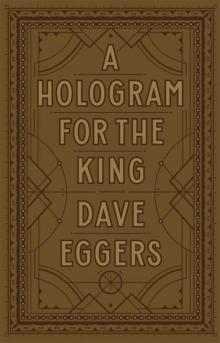 A Hologram for the King
A Hologram for the King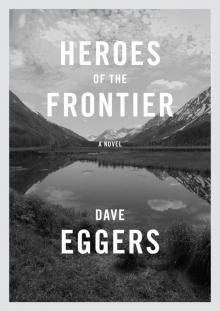 Heroes of the Frontier
Heroes of the Frontier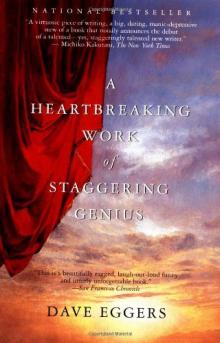 A Heartbreaking Work of Staggering Genius
A Heartbreaking Work of Staggering Genius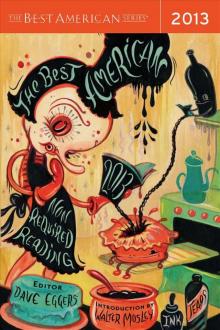 The Best American Nonrequired Reading 2013
The Best American Nonrequired Reading 2013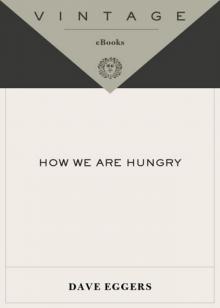 How We Are Hungry
How We Are Hungry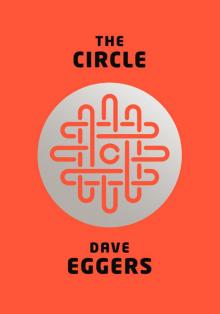 The Circle
The Circle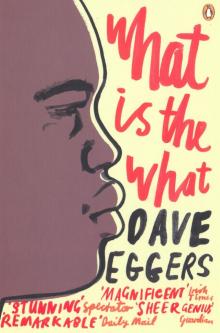 What is the What
What is the What The Museum of Rain
The Museum of Rain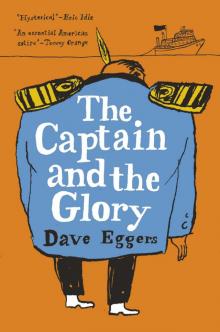 The Captain and the Glory
The Captain and the Glory Up the Mountain Coming Down Slowly
Up the Mountain Coming Down Slowly The Parade
The Parade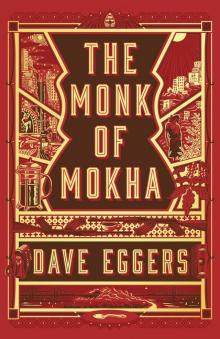 The Monk of Mokha
The Monk of Mokha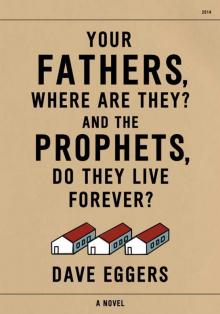 Your Fathers, Where Are They? And the Prophets, Do They Live Forever?
Your Fathers, Where Are They? And the Prophets, Do They Live Forever? You Shall Know Our Velocity
You Shall Know Our Velocity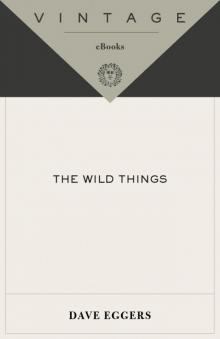 The Wild Things
The Wild Things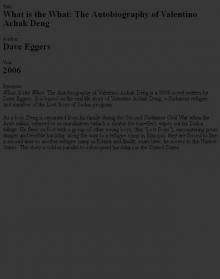 2006 - What is the What
2006 - What is the What The Best American Nonrequired Reading 2011
The Best American Nonrequired Reading 2011 Created in Darkness by Troubled Americans
Created in Darkness by Troubled Americans